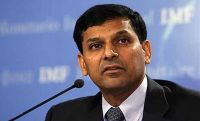
The RBI today increased the repo rate to contain inflation while softening some instruments- Marginal Standing Facility Rate and daily CRR holdings to facilitate liquidity in the system.
The repo rate hike is intended to fight inflation. At the same time, the financial system is running on liquidity shortages. During many weeks in the past couple of months, the call rate has gone beyond 10 percent level. So liquidity enhancement was necessary.
Reduction in Marginal Facility enables the banks to get more funds. This will help banks to get some extra funds by paying less interest rate to tide over liquidity.
MSF is the rate at which the banks can get loans from the RBI by surrendering 1 percentage of their SLR security holdings. This means if the SLR is 23 per cent, the banks can borrow by keeping 22 % SLR by paying a higher 9.5 % interest rate through the MSF. The previous MSF rate was 10.25%.
A similar liquidity enhancement move has made by the RBI on the CRR front. Interestingly, the present CRR is 4 %, which is very low. Hence the RBI is very limited to enhance liquidity in the traditional way by cutting the CRR. Here, the RBI has made a marginal measure by allowing banks to maintain a reduced level of SLR holding of 95%.
Truly, the net effect of the two liquidity enhancement measures will be much limited unlike in the case of an outright CRR cut. On the other hand, the repo rate increase gives a message to the market that the New Governor may not play for the galleries.
Dr Raghuram Rajan’s first monetary policy revision was keenly watched by the market men to measure the new Governor’s line of approach. Many were expecting that Dr Rajan will retain the current repo rate to stimulate market environment. But his decision to raise the repo rate indicates that he belongs to the same hard-line monetarist school of his predecessor Dr Subbarao. The repo rate hike was an unexpected move and hence the stock market reacted to it by losses.











